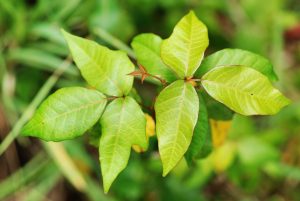Plants And Pets: What You Need To Know
 Pet owners know how curious their pets are and how much they love to sniff, lick, and nibble on just about everything they come across. Unfortunately, plants fall into this category and many pets will go to great lengths to take a bite of greenery whenever they can get away with it. This curiosity can, however, lead to big trouble, as many of the plants commonly found in and around our homes are toxic to our pets.
Pet owners know how curious their pets are and how much they love to sniff, lick, and nibble on just about everything they come across. Unfortunately, plants fall into this category and many pets will go to great lengths to take a bite of greenery whenever they can get away with it. This curiosity can, however, lead to big trouble, as many of the plants commonly found in and around our homes are toxic to our pets.
Because plants and pets often don’t mix, it’s important for pet owners to be educated on which plants pose a danger and how to protect their pets from falling victim to an accidental poisoning.
Plants To Watch Out For
The following common indoor and outdoor plants are toxic to pets if ingested:
Dieffenbachia – This is a popular indoor plant that can cause severe irritation of the mouth and throat if eaten, as well as drooling, nausea, vomiting, and difficulty swallowing.
Philodendron – A common indoor plant that contains insoluble calcium oxalate that causes oral pain, drooling, foaming and vomiting when the leaves are bitten or chewed. Your pet may also have swelling of the lips, tongue, mouth and throat, making it hard to breath and swallow. You may see your pet pawing at its mouth.
Daffodils – The flowers of this plant contain lycorine, an alkaloid that triggers vomiting and causes severe stomach pain and diarrhea. It can also cause arrhythmias and difficulty breathing.
Water Hemlock – This wetland plant, also known as Poison Parsnip or Cowbane, is often described as “the most violently toxic plant that grows in North America”. While Water Hemlock is mostly a problem for horses and cattle, some pets do occasionally fall victim, as was the case of a Colorado dog that died shortly after ingesting the poisonous flower in 2015.
Sago Palm – All parts of this common indoor ornamental are highly toxic to pets, resulting in severe gastrointestinal distress and liver failure.
Lilies – Plants belonging to the lily family, such as Easter lilies and daylilies, are the most dangerous plants for cats. A cat can develop potentially fatal kidney failure by just licking or chewing on the plant.
Mistletoe – There are several varieties of this holiday plant that are toxic to pets if ingested. Mistletoe poisoning causes mild to severe gastrointestinal distress, pain, drooling, vomiting and diarrhea. If large amounts are eaten, abnormal heart rate, low blood pressure, collapse, seizures, and even death can result.
Oleander – An outdoor shrub with evergreen qualities and delicate flowers that grows naturally and is common in warmer areas. All parts of this plant are toxic and, if ingested, it causes arrhythmias, irregular heart rate, electrolyte imbalance, nausea, drooling, vomiting, tremors, seizures, weakness, collapse, and death.
English Ivy – This popular ornamental can lead to severe gastrointestinal distress if ingested by a pet.
Lily-of-the-Valley and Foxglove – Potentially fatal heart damage can occur if ingested.
Tulips & Hyacinths – The bulbs of these plants are particularly toxic, as they contain allergenic lactones and alkaloids that cause severe irritation to the mouth and throat, drooling, vomiting and diarrhea when ingested. More severe symptoms include arrhythmias and respiratory distress. Do not allow your dog to dig up or chew on plant parts or bulbs.
Crocus – Can cause vomiting, diarrhea, kidney damage, and heart arrhythmias.
Protect your pets by knowing the poisonous plants available in your area and keeping them out of your home and yard. Also avoid contact with them by keeping your dog leashed while on walks or out on the trail.
A Word About Poison Ivy And Sumac
Poison ivy and poison sumac are both found in Colorado, but poison sumac is much more common in our area. The leaves of both plants secrete a substance called urushiol, which, as many of us know, can cause blisters and intense itching upon contact.
Poison ivy and sumac generally do not affect our pets in the same way, thanks to their protective fur coats, but since urushiol can remain active on surfaces for up to five years, it can easily be spread from pets to humans. Take the following precautions, immediately, if you think your pet has come in contact with poison ivy or sumac:
- Dry wipe your pet with a towel (wear rubber gloves!), and wash the towel along with the leash and harness.
- Give your pet a shampoo bath and rinse thoroughly.
- Wash the clothes you were wearing and take a shower.
Plants And Pets: Other Concerns
Even if you don’t have a greenery-loving dog or cat, there are other outdoor hazards to look out for when it comes to the safety of your pet, including:
- Cocoa mulch
- Snail bait
- Rodenticide
- Foxtails
If you suspect your pet has ingested a poisonous plant or other substance, please call Lone Tree Veterinary Medical Center or the ASPCA poison control hotline, or immediately bring your pet to the nearest veterinary emergency facility.



